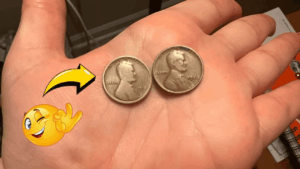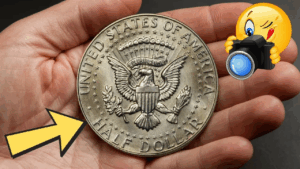A seemingly ordinary coin could be worth more than a luxury car—or even a house. That’s exactly the case with some rare Lincoln Wheat Pennies, one of which has reportedly been valued at a staggering $9.99 million. Even more surprising? A few of these valuable coins are still believed to be floating around in everyday circulation. So, check your change. That old penny might be more than just a piece of copper.
What Is a Lincoln Wheat Penny?
The Lincoln Wheat Penny was minted in the United States from 1909 to 1958. It features the bust of Abraham Lincoln on the obverse and two wheat stalks on the reverse—hence the name. Designed by Victor David Brenner, the coin marked the 100th anniversary of Lincoln’s birth and was the first U.S. coin to feature a real person.
These pennies were made primarily of copper, except during World War II in 1943, when most were produced in steel due to a wartime copper shortage.
Why Are Some Lincoln Wheat Pennies So Valuable?
Not all Wheat Pennies are rare, but some versions are extremely scarce due to:
- Low mintage numbers
- Minting errors
- Historical significance
One of the rarest and most valuable is the 1943 copper Lincoln Wheat Penny. Most 1943 pennies were made of steel, but a few copper blanks were accidentally used. These coins can fetch up to millions of dollars at auction.
Key Wheat Pennies Worth Big Money
Here are some of the most valuable Lincoln Wheat Pennies and what makes them special:
| Year | Mint Mark | Description | Estimated Value |
|---|---|---|---|
| 1909 | S VDB | First edition, San Francisco mint | $1,000 – $12,000+ |
| 1914 | D | Rare Denver issue | $500 – $5,000+ |
| 1922 | No D | Missing mint mark error | $1,000 – $10,000+ |
| 1943 | Copper | Wrong metal used | Up to $1,000,000+ |
| 1955 | Doubled Die | Obvious double stamping | $1,000 – $2,500+ |
Note: Values vary significantly depending on condition, grade, and authenticity.
Could These Rare Coins Still Be in Circulation?
Yes, and that’s part of the fascination. Many people simply don’t realize they have a valuable coin. Whether found in an old change jar, a family heirloom, or even pocket change, these pennies often go unnoticed. It’s estimated that millions of Wheat Pennies are still out there, and only a fraction have been appraised or graded professionally.
How to Identify a Rare Wheat Penny
Here’s how to check if you might be holding a small fortune:
- Check the Date and Mint Mark: Focus on 1909–1958 dates. Look for S (San Francisco), D (Denver), or no mint mark (Philadelphia).
- Inspect the Metal: In 1943, the rare copper pennies stand out from the steel ones.
- Look for Errors: Doubling of numbers or letters, missing mint marks, or off-center strikes can raise value.
- Use a Magnet: 1943 steel pennies stick to magnets, but copper does not. If your 1943 penny doesn’t stick, get it authenticated.
Where and How to Sell Your Wheat Pennies
If you think you have a valuable coin, here are your next steps:
- Get an Appraisal: Use a professional coin grading service like PCGS or NGC.
- Visit a Local Dealer: Use the ANA Coin Dealer Directory to find reputable coin dealers near you.
- Online Auctions: Websites like eBay or Heritage Auctions are popular for selling rare coins.
- Coin Shows: Attend local or national coin shows to network with collectors and experts.
- Avoid Cleaning the Coin: Never clean a coin, as this can drastically reduce its value.
What About All Those Other Coins You Have?
You’re not alone—many collectors and casual hobbyists hold on to coins from the early 20th century. If you’re holding coins from the 1920s–1950s, especially Wheat Pennies, Buffalo Nickels, Mercury Dimes, or Silver Dollars, it’s worth getting them checked.
The truth is, many people have hidden value in their pockets, drawers, or jars. Even if they aren’t million-dollar coins, several can still be worth $10 to $100 or more each, especially in good condition.
Finding a rare Lincoln Wheat Penny still in circulation is like striking gold. These tiny copper coins are not only pieces of American history—they could also be incredibly valuable. Whether you’re a collector or just curious, it’s worth taking the time to check your change. Who knows? That penny in your pocket could be a once-in-a-lifetime discovery.
FAQs
What makes the 1943 Lincoln penny so valuable?
Most 1943 pennies were made from steel. A few were mistakenly minted in copper, making them extremely rare.
Where can I check the value of my coins?
Websites like PCGS.com, NGCcoin.com, and CoinValueChecker.com offer helpful tools.
How do I know if a penny is made of copper or steel?
Use a magnet. Steel pennies stick; copper ones don’t.
Should I clean my old coins?
No. Cleaning can damage the surface and significantly reduce the value.
Are there still valuable coins in circulation today?
Yes. Rare coins, including Wheat Pennies and minting errors, are occasionally found in change.




